Do you know How to Use a Reciprocating Saw? This article is for you. A reciprocating saw is a widespread power tool. It’s quite popular among DIYers due to its ease of use and convenient features. However, not everyone is familiar with the functioning of these tools, and explaining what they are used for is the main purpose of this article.
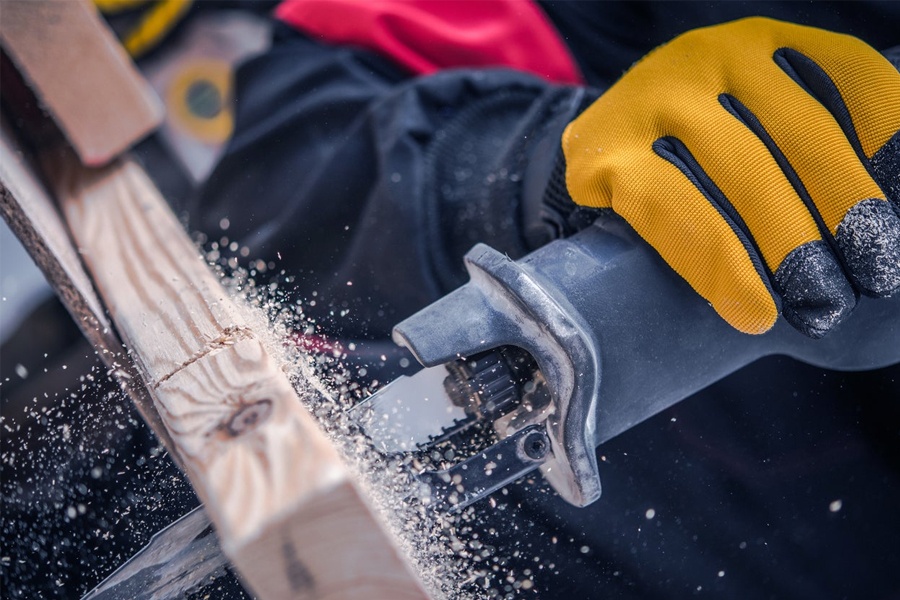
Generally speaking, reciprocating saws are home improvement tools that you can use to cut through different materials, such as wood, plastic, or metal. You can also use one to cut through ceramic tile or even concrete, depending on the type of blade you’re using.
A reciprocating saw can also be a helpful tool when it comes to demolishing small spaces. You can also use them to prune trees and shrubs, among many other things. It’s a highly versatile tool. This article is for you if you’re interested in learning how to use a reciprocating saw.
We’ll explore the basic concept of these power tools and the basics so you can start improving your ability with them. Still, it doesn’t require that much practice!
You might also want to check out our recommendations for the Best Reciprocating Saws.
What is a Reciprocating Saw?
A reciprocating saw is a powerful tool that works through a “push and pulls” mechanism. Hence, you can think of them as automatized hand saws with many other capabilities. Reciprocating saws have evolved a lot since they were first introduced to the market.
Modern models include orbital action, which changes the movement of the blade and makes it “elliptical,” allowing you to cut even faster through the wood. Furthermore, you can also find diverse models appropriate for specific things. It’s possible to find both cordless and corded models, and both options are equally good.
It’s also possible to find two-hand models and one-hand versions, which allow you to work in enclosed environments. Reciprocating saws are often compared to jigsaws since they function in a similar fashion. However, jigsaws are used for more accurate activities that require more control. Reciprocating saws provide the user with power and movability.
Features of a Reciprocating Saw
Reciprocating saws have different features that make them very easy to identify in the market. Here’s what you will commonly find in a reciprocating saw:
Handle and Grip
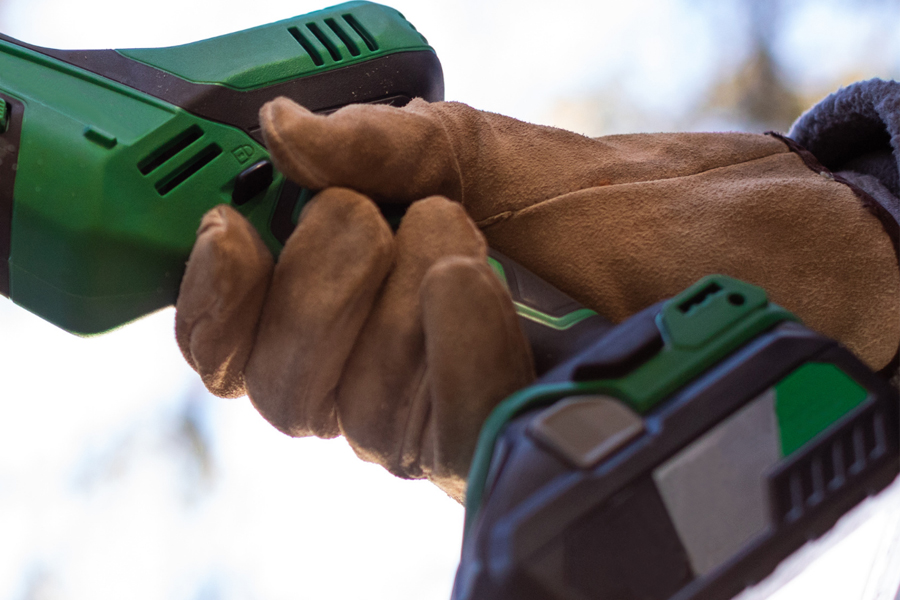
The user must use their dominant hand to grab the handle. The other hand must be on the front grip. It’s necessary to apply enough force to make sure that the power tool will remain stable while you’re using it.
Speed Trigger
The speed trigger varies from one model to another. Generally speaking, it allows you to switch the speed and grants you control while you’re using the tool.
Interchangeable Blades
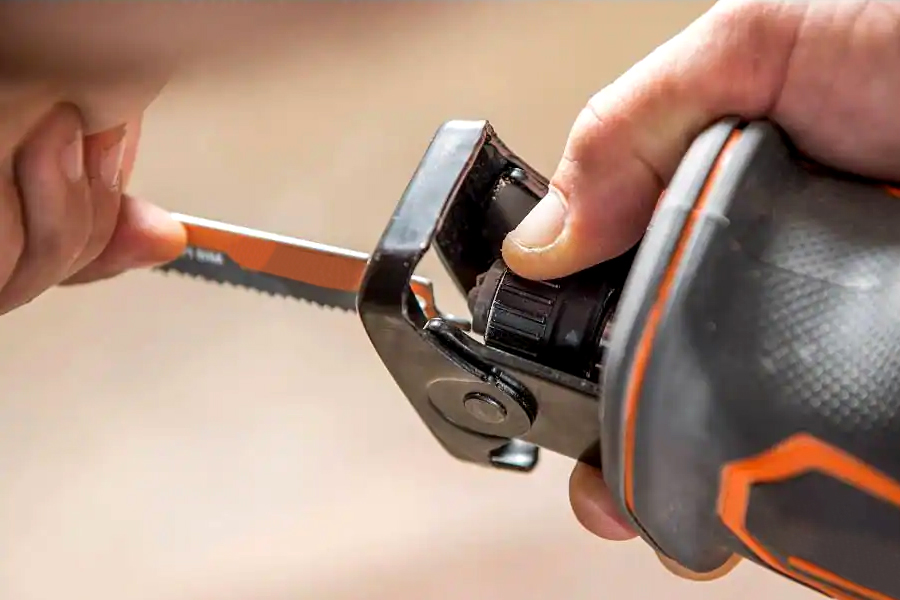
Reciprocating saws are not meant to have fixed blades. You can use varied blades to cut through different materials. You can insert the blades into the tool through the blade release. If you have an older model, you may find a manual chuck, but quick-release mechanisms are more common nowadays.
Shoe
You can find the “shoe” at the end of the blade’s base. It will be in direct contact with the material you’ll cut. You can adjust this part so you can cut through the material in different ways, allowing you to take as much advantage as possible of the blade without problems.
Orbital Action
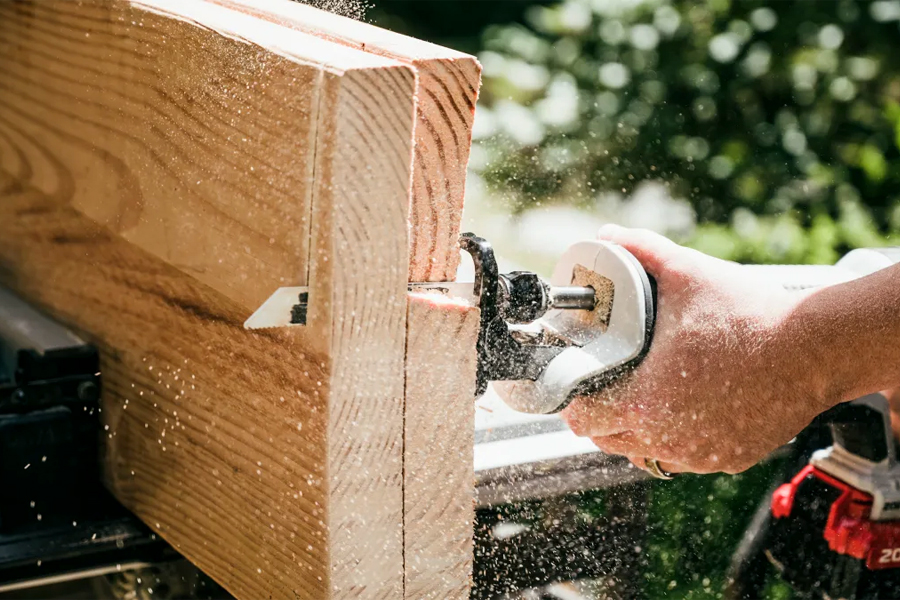
As mentioned, it’s prevalent for modern reciprocating saws to include an orbital action trigger. This dial allows you to choose how “aggressive” the tool will be against the material you’ll cut. As an extra note, it’s very common for newer saws to include work lights, which allow you to keep the area where you’re cutting illuminated.
What do you Use a Reciprocating Saw For?
Reciprocating saws have many uses. You can take advantage of them to make demolition jobs more accessible and entertaining, or you can use them for home repairs and DIY projects. Generally speaking, these tools are pretty versatile and can be used for jobs that do not require too much precision.
A reciprocating saw’s primary purpose is to make rough cuts. Hence, if you don’t care that much about how the material looks once you’re finished, you can use a reciprocating saw for your project. With that being said, these power tools can help you make a good plunge cut and cut through different materials, such as wood, plastic, or metal.
How to Use a Reciprocating Saw Safely?
Now that you know the essential parts and functions of a reciprocating saw, it is time to learn how you can use them. It doesn’t take too long to learn how these tools work, but it certainly requires practice to a degree if you intend to do more intricate jobs.
Here we have a step-by-step guide on how to use a reciprocating saw, following the appropriate safety measurements.
Choose the Correct Blade
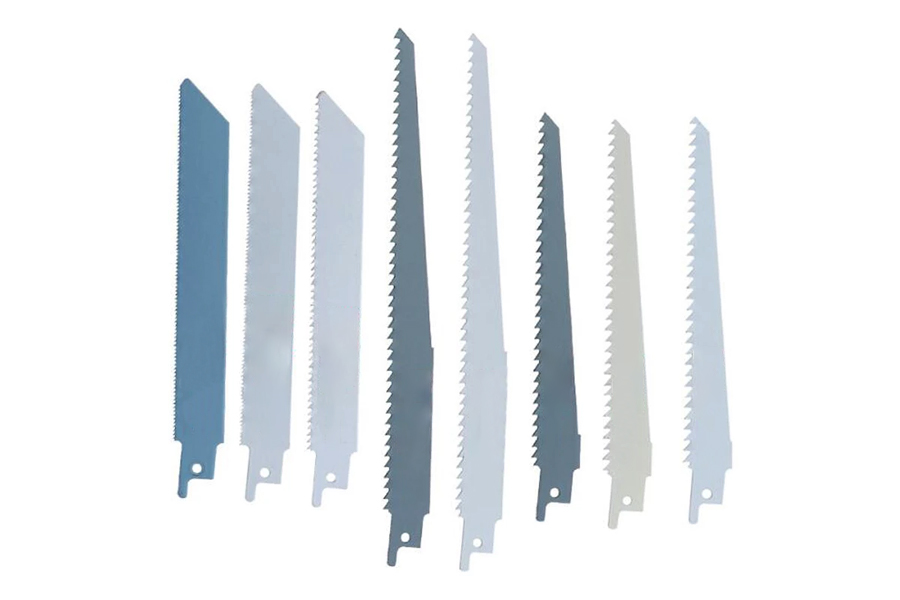
First, make sure that you’ve chosen the correct type of blade for the project you have at hand. It’s possible to find different blades out there depending on what you intend to cut through:
- If you cut pipes, nails, and other metal pieces, you’ll want to use fine-tooth blades, which are similar to hacksaws.
- Coarse blades are better for cutting through wood.
- A coarsest-tooth blade can help you cut through plaster smoothly.
- You can also use pruning blades to cut three branches.
- Last but not least, there are toothless blades. These blades can be used for cutting through ceramic tile, cast iron, and stone, among many other materials. These blades are easy to identify.
For instance, if you’ll cut metal, choose a metal-cutting blade, and so on. You can use certain blades to cut through diverse materials without problems. You’ll be required to replace the blades with new ones as soon as you feel like they’ve started to feel dull and have slowed down the cutting process.
Also, a bent blade is easy to revive. All you need to do is use a hammer to flatten them.
Install the Blade
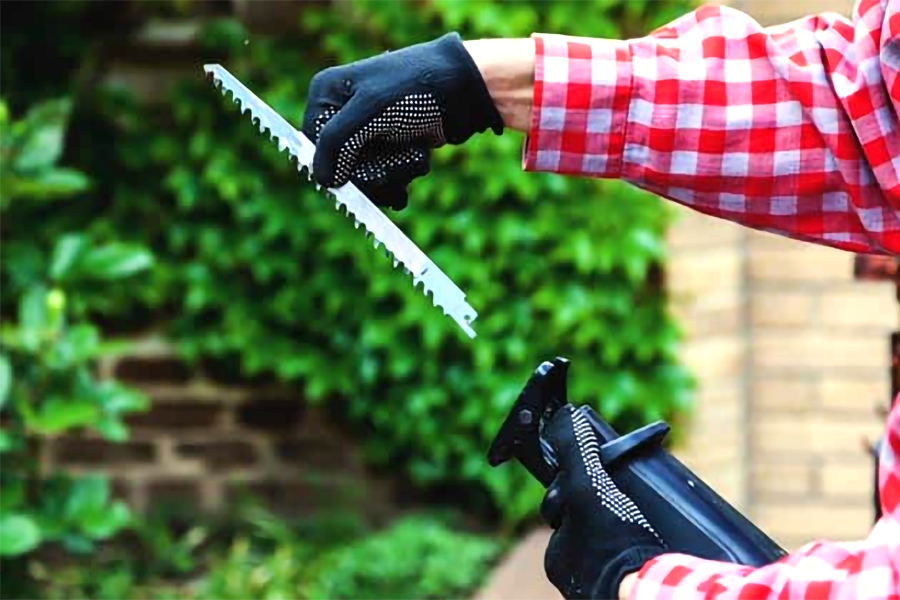
You can install the blade on your reciprocating saw by sliding the blade into the right compartment. Make sure that it is disconnected from the power source. Furthermore, you can place their teeth up or down, depending on the job you’re trying to complete.
Fit the blade, and then stop pressing the blade release. Make sure that you’ve firmly placed the blade and connect the saw again to the power source.
Important Note: A reciprocating saw’s blade is always exposed. Therefore, it is essential for you to be especially careful while you’re operating it. Bulky gloves and loose clothes are not good safe options to use while you’re using one of these saws.
Adjust the Shoe
Next up, please make sure to adjust the show appropriately so you can prepare the blade for the correct cut. You can do this once the blade is already approaching the right spot. Adjusting the show at this precise moment can make the job easier, as the material will go through a wider teeth portion.
Adjust the Orbital Action
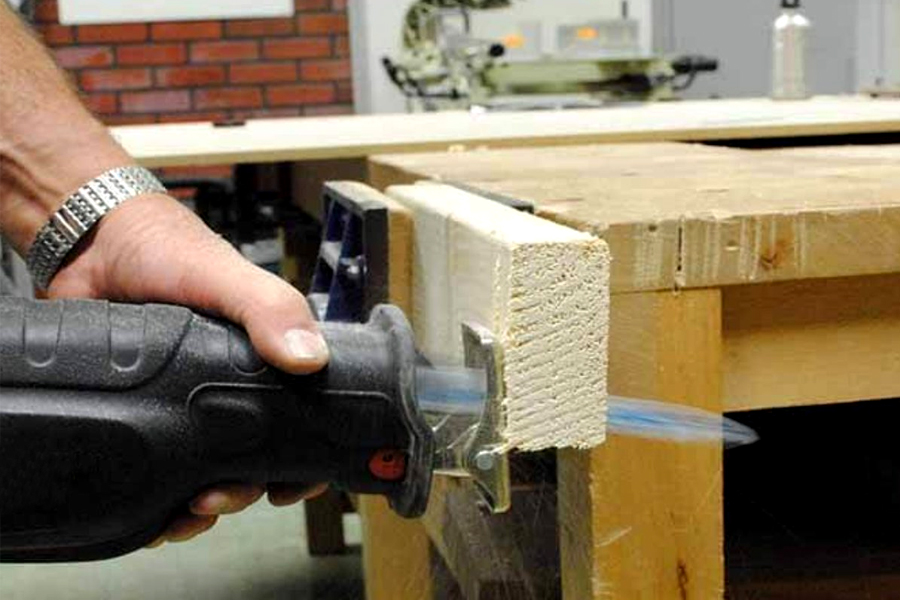
The orbital action adjustment is meant only to be used while cutting wood, and that’s why not all reciprocating saws include it. You can adjust the orbital action if you’d like to make more aggressive cuts, but it’s not necessary for every project.
Vary Your Speed
Some saws come with a variable speed trigger, but others require you to pull the trigger to be able to use them at full speed. However, make sure that you’re firmly grasping the saw to ensure that the tool remains stable while you’re cutting. Unless it’s a one-hand reciprocating saw, try using the tool with both hands to make sure it functions correctly during the process.
Know What You’re Cutting
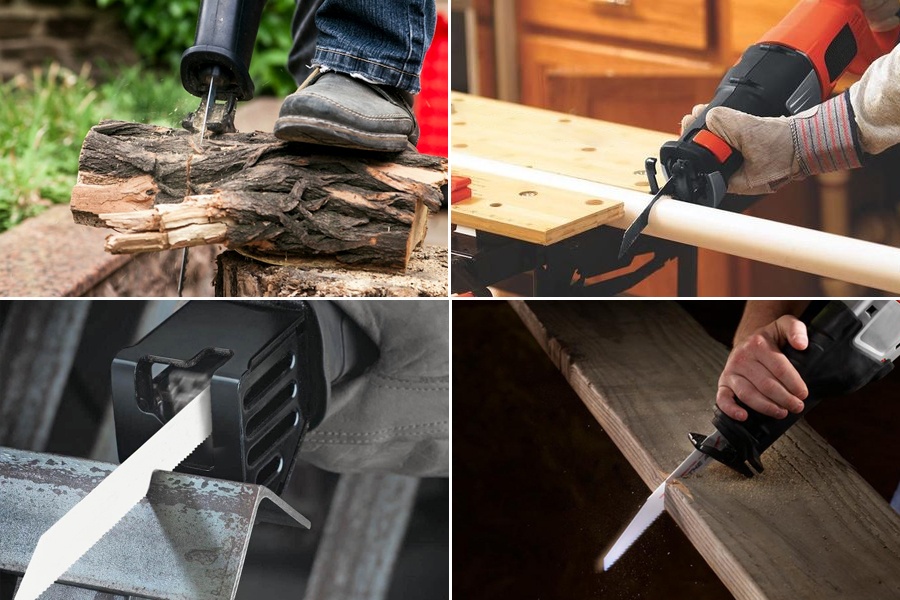
What material will you cut through? What is your intention with this project? Will you demolish or perhaps remodel a certain area? Make sure that you remember your intention while using the reciprocating saw to ensure that the process will go smoothly.
Prepare the Material and Workspace
Make sure to clear the area, grab all the extra tools you need to complete the job you’re doing, and so on. Try to make the space as comfortable as possible to ensure everything goes smoothly.
Wear Safety Accessories
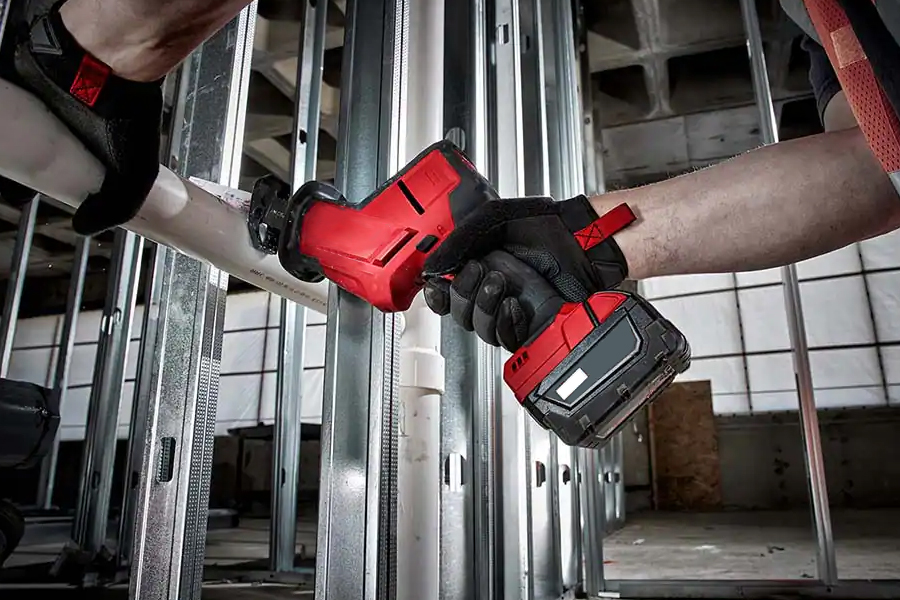
It’s important to use safety glasses and ear plugs while you’re cutting. These safety accessories will protect your ears and eyes while using the saw. You may also choose to wear dust masks, but it is not necessary. It’s not recommendable to use gloves because it may cause unwanted accidents. Similarly, please avoid using loose clothes.
Hold the Saw Firmly
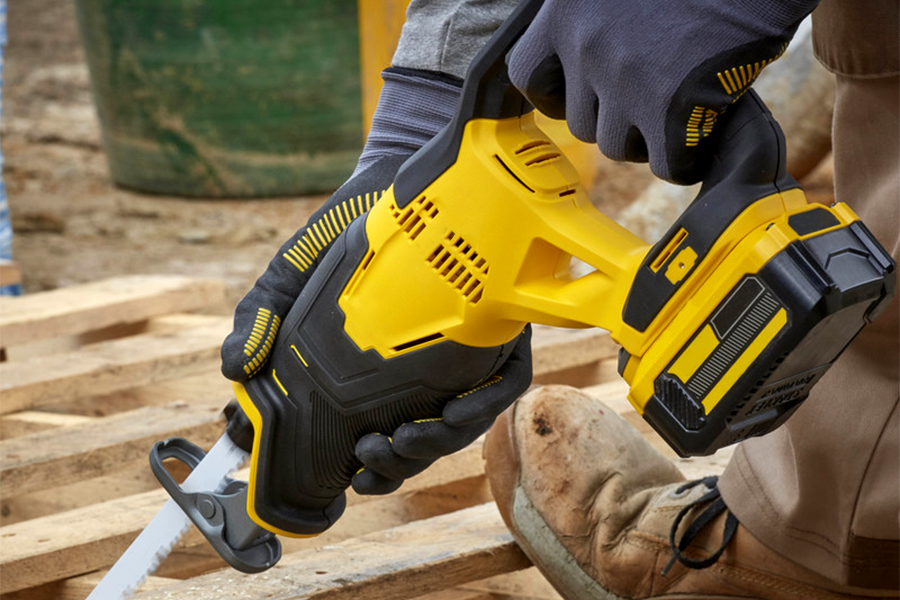
Once you’re ready to start cutting through the material, ensure that you’ve identified the spot where you’ll cut and that the shoe is against the material’s surface as tightly as possible. This way, you’ll reduce the vibration generated by the tool, and the tool will cut faster.
Make sure to use your dominant hand to grab the back of the saw and use your finger to pull the trigger. Doing so will grant you more control over the tool.
Start Making Cuts
Now that you’ve set up everything, you can pull the trigger so you can activate the tool’s speed. Keep pressing the trigger so you can make more precise, cleaner, and faster cuts. Conduct the cuts based on what you’re doing. Stop pulling the trigger once you’re done with the cut, and repeat as many times as necessary.
Safety Considerations
In addition, here we have a few safety considerations that you can take into account to ensure that you’re safe throughout each process step.
- Make sure to know the are where you’ll cut. For instance, if you’ll cut through walls and floors, there might be pipes or wires!
- Whenever you change an accessory or a blade, make sure that the reciprocating saw is disconnected.
- It’s possible for blades to bind if you’re cutting through a pipe or a wood piece. If this happens, it may cause the saw to buck.
- Don’t grab the blade once you’ve finished the cut. The blade gets very hot while you’re using it. So, wait for a little while before making a blade change.
Conclusions
Reciprocating saws are versatile tools that you can use for diverse purposes, such as DIY projects, demolition, or even home repairs. They are uncomplicated to use and are suitable for cutting through diverse material options.
We recommend you use one of these power tools if you intend to do a job where the material’s finish is not important. Otherwise, maybe a different tool will be useful.
Frequently Asked Questions
Can you Use a Reciprocating Saw to Cut Tree Branches?
Yes. You can use a reciprocating saw to cut three branches, but for that, you’ll need a pruning blade. Make sure to use the right tool so you can complete the job adequately.
Can you Use a Reciprocating Saw like a Jigsaw?
It’s possible to use a reciprocating saw like a jigsaw, as they are quite similar. You can mimic the same movements of a jigsaw with a reciprocating saw. However, please note that both tools have different performances, so the results may not be as great as you may expect. Make sure to use the appropriate tools for the project you might have at hand.
How Do I get a Straight Cut with a Reciprocating Saw?
Make sure that you’re holding the reciprocating saw aligned with your stomach. Then, apply pressure to the material with the shoe, and align the blade to the line you’ve marked previously as accurately as possible. Angle the saw downwards at a slight degree and start making the cut.
Can I Use a Reciprocating Saw to Cut Plywood?
It’s possible to cut through plywood pieces and even plyboard pieces with a reciprocating saw. Everything is okay as long as you use the appropriate blade.
Should you Wear Gloves with a Reciprocating Saw?
It’s not recommended to wear gloves while wearing a reciprocating saw because it reduces your sensitivity, causing you to have less control over the tool. Therefore, try to use your bare hands while using a reciprocating saw most of the time.

Leave a Reply